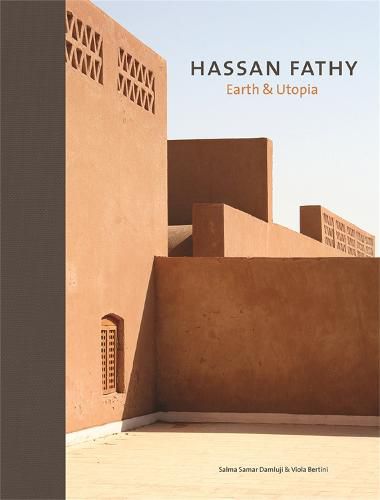Readings Newsletter
Become a Readings Member to make your shopping experience even easier.
Sign in or sign up for free!
You’re not far away from qualifying for FREE standard shipping within Australia
You’ve qualified for FREE standard shipping within Australia
The cart is loading…






Shortlisted for The Richard Schlagman Art Book Awards 2019
Through drawings, interviews and Fathy’s own writings, this book is the first for a generation to seriously explore his fascinating legacy - Financial Times
a substantial and solemn tribute to the Egyptian architect - Observer New Review
Hassan Fathy is Egypt’s best-known 20th-century architect. He embraced traditional, vernacular forms, techniques and materials and throughout his career promoted their use as part of a campaign to improve the conditions of Egypt’s rural poor.
Earth & Utopia chronicles this lifelong commitment through personal interviews conducted by the author, photographs and drawings from the Hassan Fathy archives, and Fathy’s own writings on the subject, many of which are published for the first time.
This book will be essential reading for students, academics and general readers interested in Fathy, and the development of Arab and vernacular architecture, earth construction, architecture for the poor and sustainability.
$9.00 standard shipping within Australia
FREE standard shipping within Australia for orders over $100.00
Express & International shipping calculated at checkout
Shortlisted for The Richard Schlagman Art Book Awards 2019
Through drawings, interviews and Fathy’s own writings, this book is the first for a generation to seriously explore his fascinating legacy - Financial Times
a substantial and solemn tribute to the Egyptian architect - Observer New Review
Hassan Fathy is Egypt’s best-known 20th-century architect. He embraced traditional, vernacular forms, techniques and materials and throughout his career promoted their use as part of a campaign to improve the conditions of Egypt’s rural poor.
Earth & Utopia chronicles this lifelong commitment through personal interviews conducted by the author, photographs and drawings from the Hassan Fathy archives, and Fathy’s own writings on the subject, many of which are published for the first time.
This book will be essential reading for students, academics and general readers interested in Fathy, and the development of Arab and vernacular architecture, earth construction, architecture for the poor and sustainability.